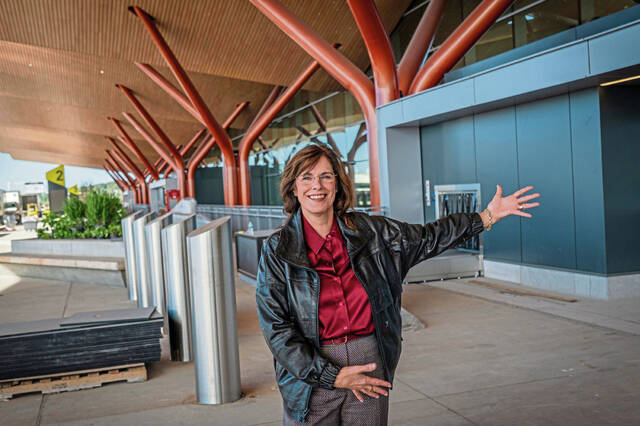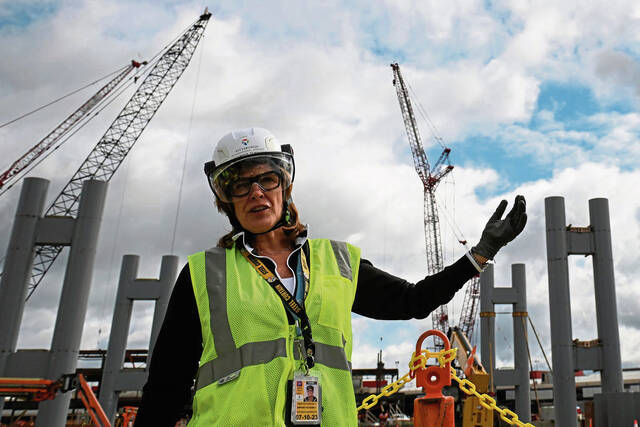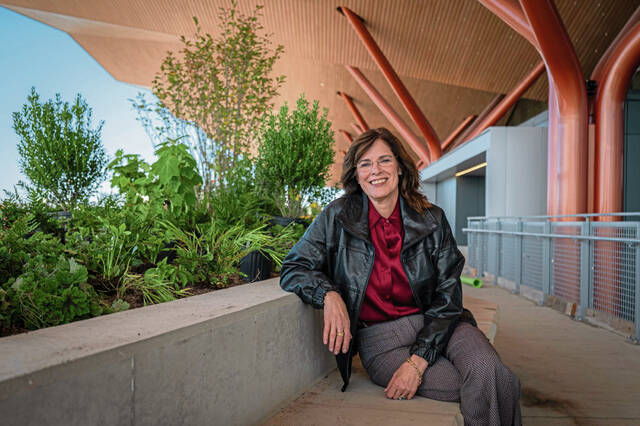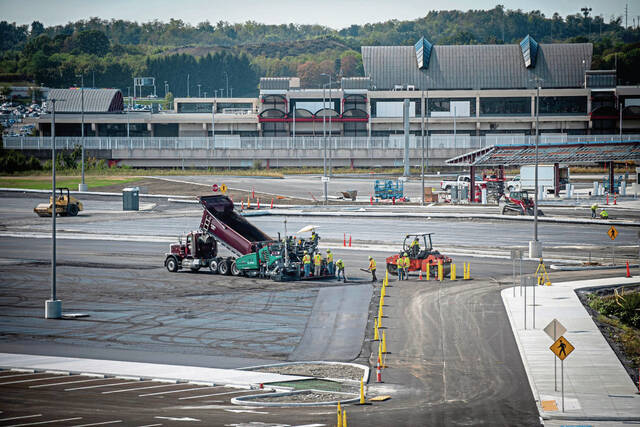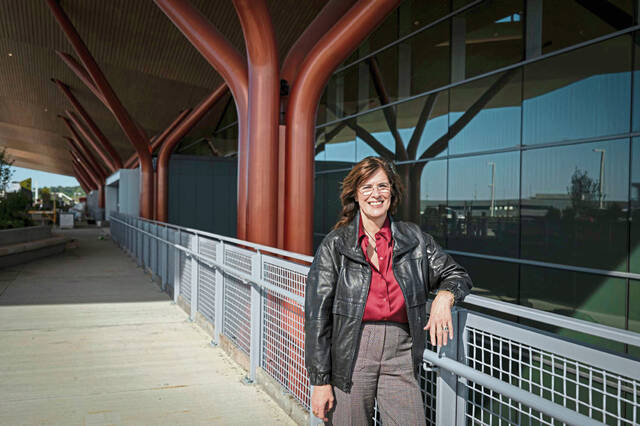During her job interview, Christina Cassotis made a bold statement to board members of the Allegheny County Airport Authority and the Allegheny County executive: “Hubs do not work in the Midwest.”
The region will remember the 1992 Pittsburgh International Airport being designed to be a hub for US Airways. It was called the “airport of the future” by the New York Times.
But a post-Sept 11 travel climate put one of the final nails in US Airways’ coffin. It declared Chapter 11 bankruptcy not once but twice, and pulled out of the airport as a hub in 2004.
“I took the job to help Pittsburgh redefine its business model,” said Cassotis, CEO of the Allegheny County Airport Authority, which operates Pittsburgh International Airport and Allegheny County Airport. “Hubs were over in the Midwest. I said to the board and the county executive, ‘I can help you get more airline services. You can’t be a hub. It’s not about the airport. It’s about the market.’ ”
Now, as Pittsburgh International is completing a $1.7 billion modernization project that is slated to open by Thanksgiving, all eyes are on the future of travel in Western Pennsylvania.
Cassotis is not concerned about Spirit Airlines’ recent bankruptcy having an impact on the airport or other airlines. That’s one of the reasons she wanted to diversify airlines — so an airport doesn’t depend on one airline.
“We can recover so much faster than if we were a hub,” she said.
When she joined in early 2015, she anticipated staying for only three years. But, she recognized the potential to broaden her original business model by attracting additional domestic and international carriers, both passenger and cargo. At that point, the modernization project had not yet been conceived.
Under her leadership, Pittsburgh’s air service has grown from 36 to 61 destinations. Today, every major U.S. airline — with the exception of Hawaiian Airlines — operates at the airport, along with two European carriers.
International flights currently go to Cancun, Mexico; London; Montreal and Toronto; Punta Cana, Dominican Republic; and Reykjavik, Iceland, according to the Airport’s website.
Cassotis said that the airport will get more international flights when “there are enough people to fill a plane.” Because, like with anything else, demand drives decisions.
In the genes
Cassotis said her father inspired her love for travel.
A former U.S. Marine Corps fighter pilot, her dad transitioned to commercial aviation with Pan Am, flying routes from Hong Kong’s airport. Her family moved from Hong Kong to New England, where she grew up. When he took Cassotis and one of her four siblings to London, it set the tone for her career.
“After that trip, I wanted to be the person who flies all over the world like my dad,” she said.
But she never wanted to be a pilot.
Cassotis, 61, of Bell Acres, bartended before working at the Department of Energy Resources. She then moved on to Massport, the owner and operator of Boston Logan International Airport. She went to the University of Massachusetts while working at Massport and earned a bachelor’s degree, and then to the Massachusetts Institute of Technology Sloan School of Management, where she earned a master of business administration.
When she was recruited to come to Pittsburgh, she felt the timing was right.
“I wanted an operational role,” she said. “I wanted to run something. I was a consultant working with airports around the world and thought this would be a great fit.”
Into the future
Now, she is leading the construction of a new airport — the first to be designed and built in the U.S. post-pandemic.
It will be completely powered by a microgrid fueled by natural gas and solar energy.
Cassotis said travelers will notice more natural light, high ceilings and outdoor terraces that are accessible to everyone. There are more sensory rooms, more nursing stations, baby and adult changing tables, and additional services for travelers, should their flights be delayed or canceled. The airport has plenty of space to accommodate wheelchairs and strollers and better signage to help passengers get where they are going faster, as well as new dining options. She wants the airport to work for everybody — for business passengers, people with strollers and in wheelchairs, people who are color blind or might not speak English.
She noted that some of the new technology won’t be immediately visible to passengers. For instance, the upgraded baggage system is so quiet that operators will no longer need hearing protection. In the current terminal, the bag-loading area is so loud that conversations are nearly impossible, and employees are required to wear ear protection. In the new terminal, that will no longer be necessary.
“It’s about prioritizing travelers and employees,” Cassotis said.
Authority spokesman Bob Kerlik said the project has attracted inquiries and visits from executives at other airports considering building projects.
Kerlik previously told TribLive that the bonds financing the project will be repaid with revenue airlines pay the airport. Three bond rating companies have affirmed the airport is on solid financial footing despite an uncertain worldwide economy, Kerlik said.
”There is no local taxpayer money in the project,” Kerlik said. “There are some federal grants involved but the vast majority of the project is being funded by the airlines and airport revenue.”
Kerlik said more than 40 trials have already been conducted to test the new airport. Most recently, organizers held two advanced trials, a friends-and-family open house for airport employees, and an integrated trial that evaluated the entire passenger experience — from ticketing and security to baggage claim. Another integrated trial is still to be scheduled. The Oct. 11 community day has reached capacity, with about 10,000 attendees expected, Kerlik added.
“The trials have gone well,” Cassotis said. “We don’t want any surprises on day one with the public.”
Because it’s so heavy on technology, surprises could include a situation with a computer system or some kind of mechanical disruption. The airport checks for threats or suspicious activity constantly, as safety is the top priority, Kerlik said.
“The passenger traffic speaks for itself – we are an airport serving a population coming or going from our local region,” Allegheny County Executive Sara Innamorato said via email. “We no longer need an airport designed to primarily accommodate people who are transferring through to another destination.”
She shares Cassotis’ opinion that to continue to grow, diversification of airlines and routes is necessary.
“We’ve seen how important tourism and business travel are in a post-pandemic economic recovery and healthy airline service is a key component to us being a competitive destination,” Innamorato said.


